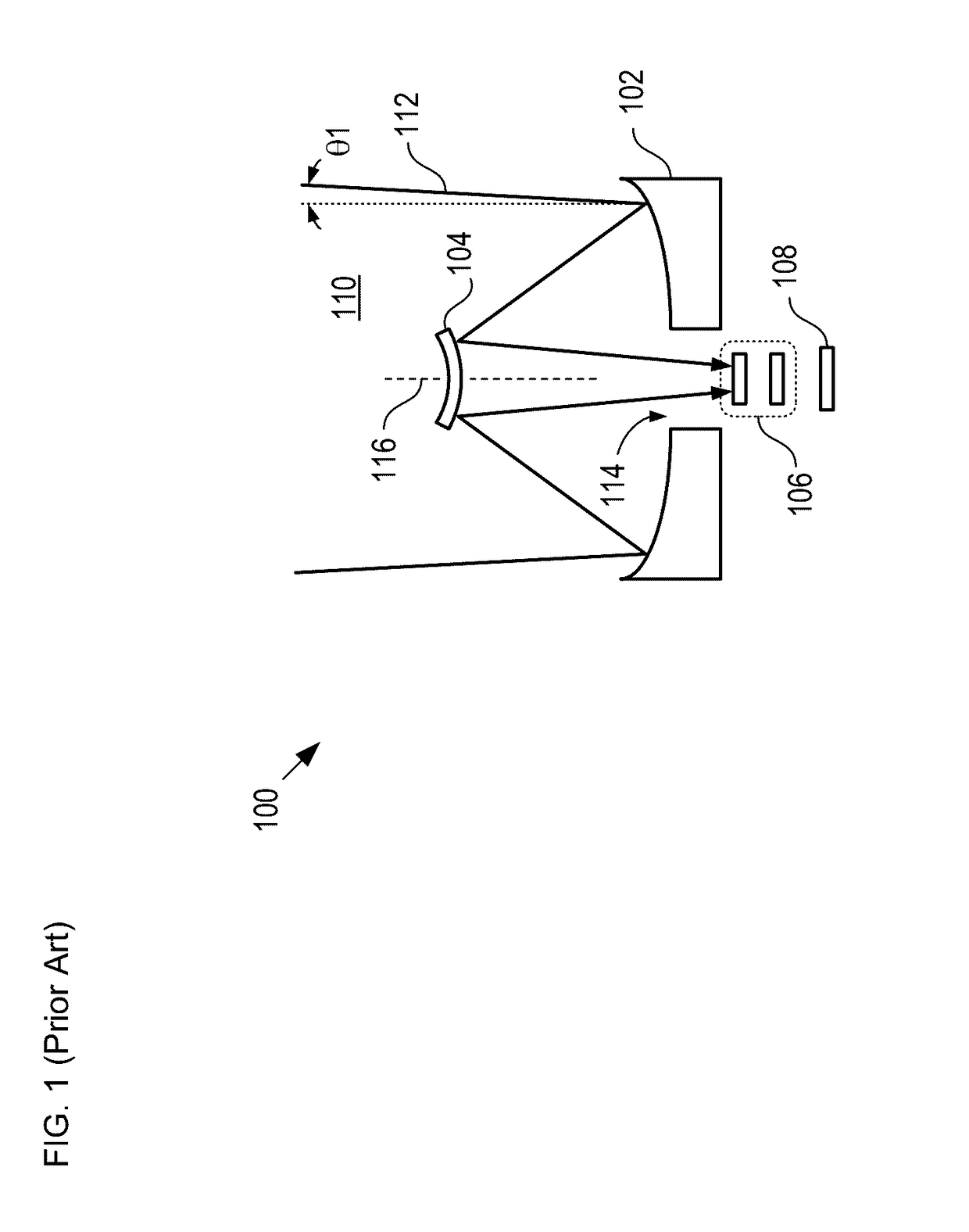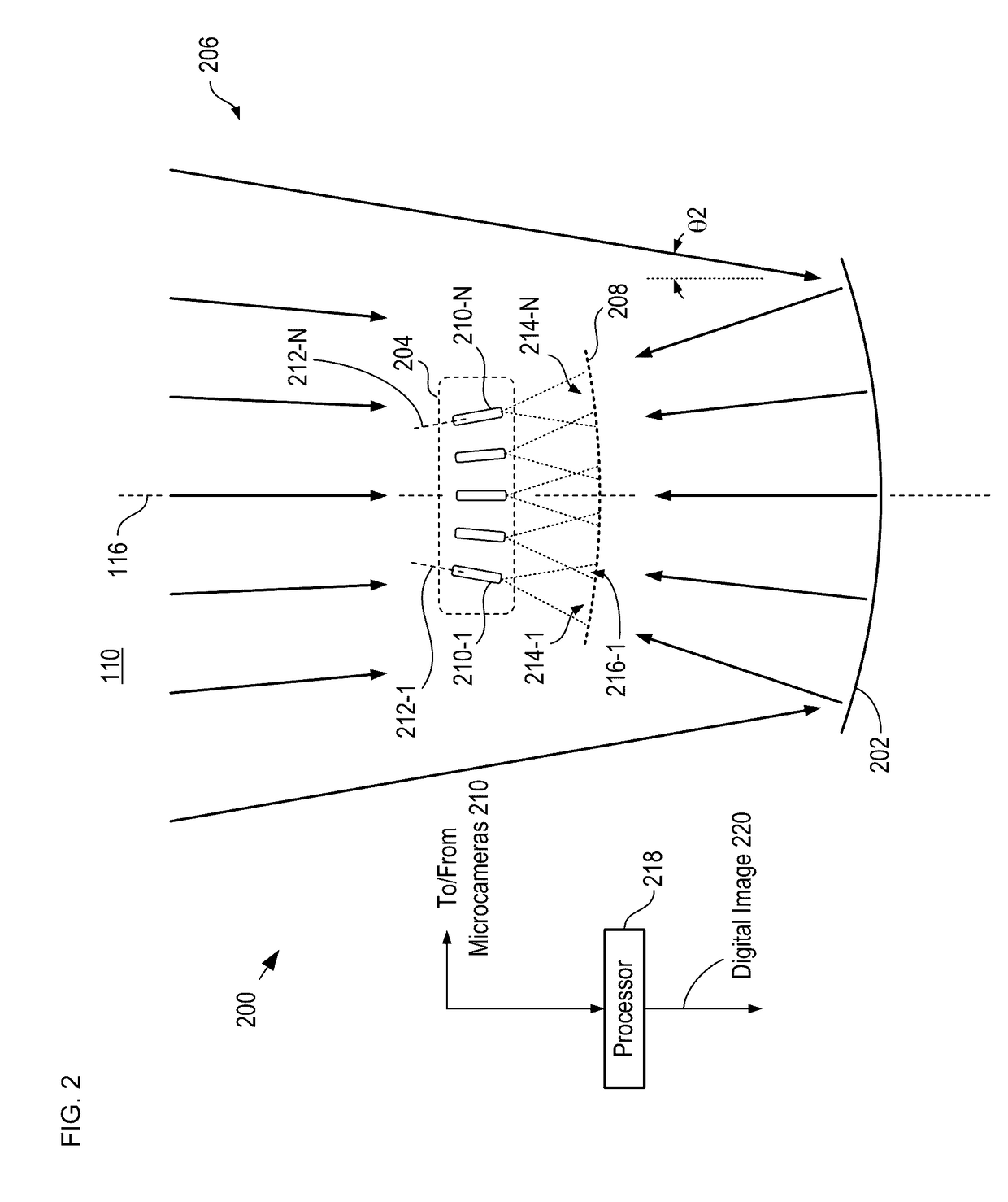Multiscale telescopic imaging system
a multi-scale, telescopic technology, applied in the field of wide field of view imaging systems, can solve the problems of image distortion, aberration, speckle, etc., and achieve the effect of reducing the magnitude of a first localized aberration
- Summary
- Abstract
- Description
- Claims
- Application Information
AI Technical Summary
Benefits of technology
Problems solved by technology
Method used
Image
Examples
Embodiment Construction
[0059]FIG. 1 depicts a schematic drawing of a cross-sectional view of a telescopic imaging system in accordance with the prior art. Imager 100 comprises primary mirror 102, secondary mirror 104, focusing system 106, and focal plane array 108. Imager 100 forms an image of a portion of scene 110. Imager 100 is representative of restricted-view, large-aperture telescopes, such as the Sloan Digital Sky Survey telescope, designed to generate a map of the entire sky. Image 100 combines employs a wide aperture to enable astronomical surveys that include stellar and galactic objects, as well as near-earth objects (e.g., low-earth satellites, space debris, etc.).
[0060]Primary mirror 102 is a 2.5-m diameter concave mirror that includes hole 114. Primary mirror 102 has a substantially symmetric shape about axis of rotation 116. Mirror 102 receives light rays 112 from scene 110 and reflects them to secondary mirror 104.
[0061]Secondary mirror 104 is a 1.08-m diameter convex mirror having a subst...
PUM
 Login to View More
Login to View More Abstract
Description
Claims
Application Information
 Login to View More
Login to View More - R&D
- Intellectual Property
- Life Sciences
- Materials
- Tech Scout
- Unparalleled Data Quality
- Higher Quality Content
- 60% Fewer Hallucinations
Browse by: Latest US Patents, China's latest patents, Technical Efficacy Thesaurus, Application Domain, Technology Topic, Popular Technical Reports.
© 2025 PatSnap. All rights reserved.Legal|Privacy policy|Modern Slavery Act Transparency Statement|Sitemap|About US| Contact US: help@patsnap.com



